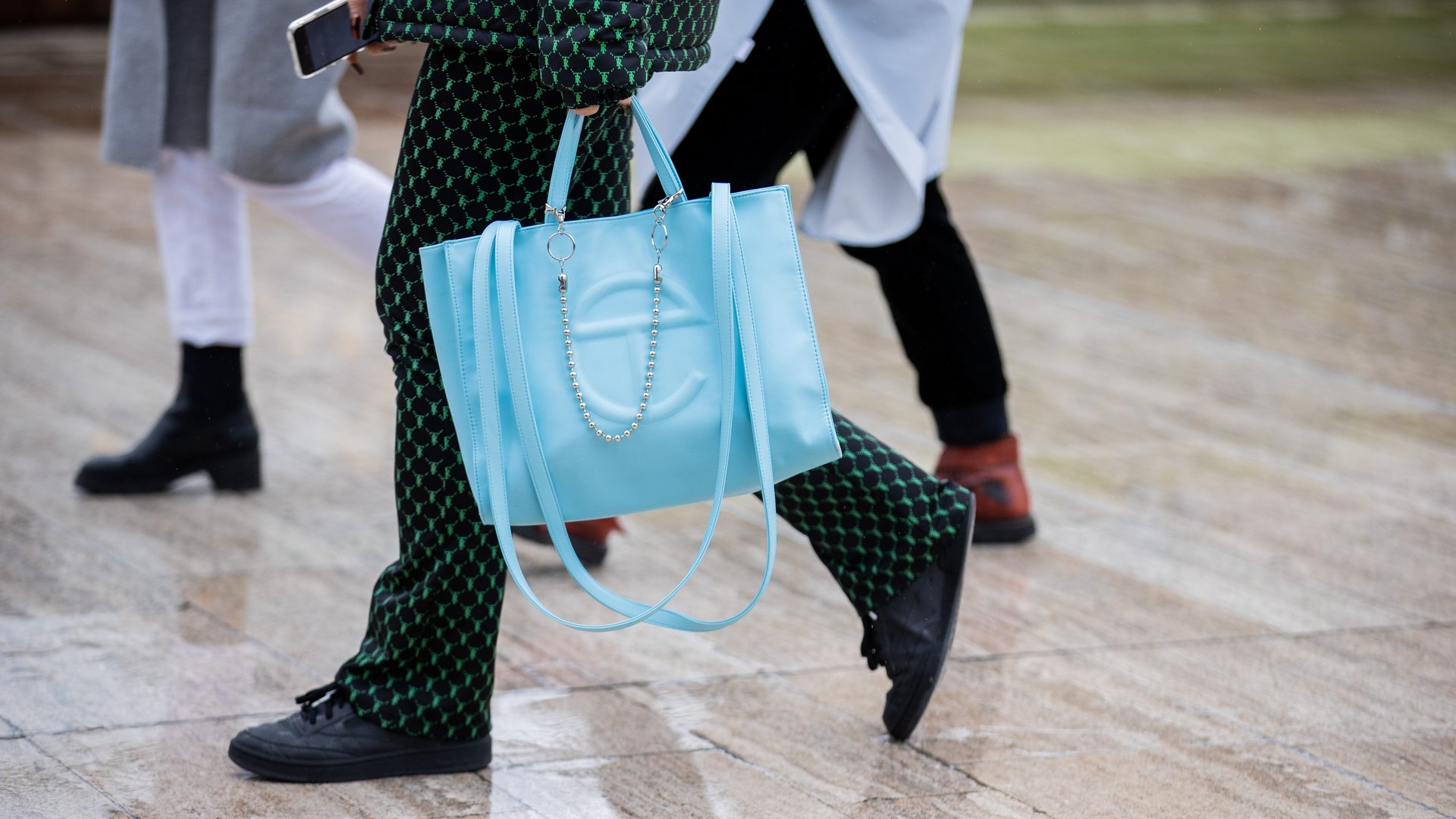Telfar’s move to make its sought-after bag available to everyone was smart business
At a time when many of us have little need for another handbag, shoppers rushed to buy one bag in particular this week.


At a time when many of us have little need for another handbag, shoppers rushed to buy one bag in particular this week.
New York-based fashion company Telfar held a special sale for its “Shopping Bag” on Aug. 19 to make them available to all who want one. Practical and tasteful, with a simple embossed logo that lends it a graphic personality to boot, the affordable vegan-leather bags have become a widely sought status symbol. Demand has grown so intense since the company introduced them in 2014—finding an early audience among predominately queer and Black New Yorkers—they are constantly sold out. When more do come up for sale, they disappear in moments.
In an industry where perceived exclusivity is a key component of desire (paywall), the sale was an unusual move and in keeping with designer Telfar Clemens’s mission to keep the brand accessible. “Not for you—for everyone” is its motto. But it was also a shrewd business decision that solved some of the most challenging problems for growing designer fashion companies.
Instead of a traditional sale, where Telfar would make the bags and then sell them, it held a one-time pre-order. Customers got a choice of colors and sizes, ranging in cost from $150 to $257, and paid up front for their bags. Telfar will make what was ordered and deliver the goods in December and January. The format has become more popular (paywall) because of the advantages it offers.
“Pre-ordering is something that we’ve seen increasing even prior to Covid,” said Sarah Willersdorf, Boston Consulting Group’s global head of luxury. “Many brands, especially smaller or growing brands, are basically using pre-orders to do a few things: First, try to better predict their demand; second, avoid having excess inventory, which we know from Covid is still a tremendous challenge and cost burden; and then finally cover production costs ahead of time.”
Small designer brands generally live season to season, using the sales from one season to fund the next. Whether they’re selling straight to shoppers or wholesale to a retailer, they first need to come up with the cash to make all the clothes and accessories. It can be especially challenging when a brand is growing fast and needs ever-larger amounts of capital. If the company forecasts its sales badly and ends up with a large amount of unsold inventory, the mistake can be costly.
The situation has only gotten worse during the pandemic, when clothing sales have fallen, retailers have cut orders, and cash flow has slowed. Telfar’s pre-order bypassed these issues, letting it know exactly how much inventory it needed and giving it the cash required to produce it.
The one-time sale isn’t likely to make its bags so ubiquitous as to diminish the brand’s cachet either. Large companies such as Nike and Hermès often have to manage the scarcity of their products (paywall) so they don’t oversaturate the market, fueling a secondary market that doesn’t always benefit the companies or their customers.
“It’s still a brand that feels a little bit like you need to be in the know to know about it,” Willersdorf said. “I would expect to continue to see this brand grow—and grow despite the current Covid challenges, despite the current economic challenges—because it’s really tapped into something and the consumers who shop it are very loyal and very excited by it.”